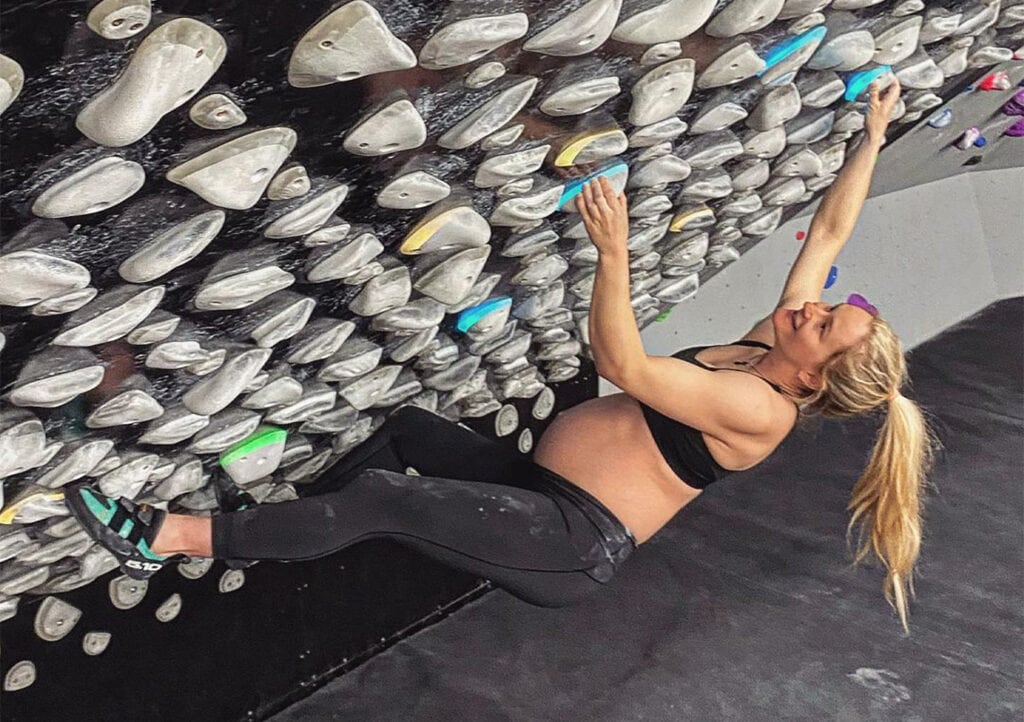Rock Climbing While Pregnant: Is It Safe?

Published on 07/11/2022
Climbing while pregnant is a journey chock full of challenges. Your pregnant body will constantly be undergoing changes, even after birth. If you are an avid rock climber, you may be apprehensive about whether climbing pregnant is safe and what precautions to take.
The good news is that exercising and training while pregnant has excellent benefits for both mom and baby. Climbing while pregnant not only builds a stronger core but also increases the overall health of pregnancies and has the potential to bring quicker delivery and postpartum recovery.
Let’s take a closer look at all the benefits of exercise and physical activity with pregnancy and discuss whether it is safe to rock climb while pregnant.
DISCLAIMER: This is not a medical article. My advice does not replace the recommendations of a medical doctor. For the best advice and options for you, talk to your doctor.
Exercising While Pregnant
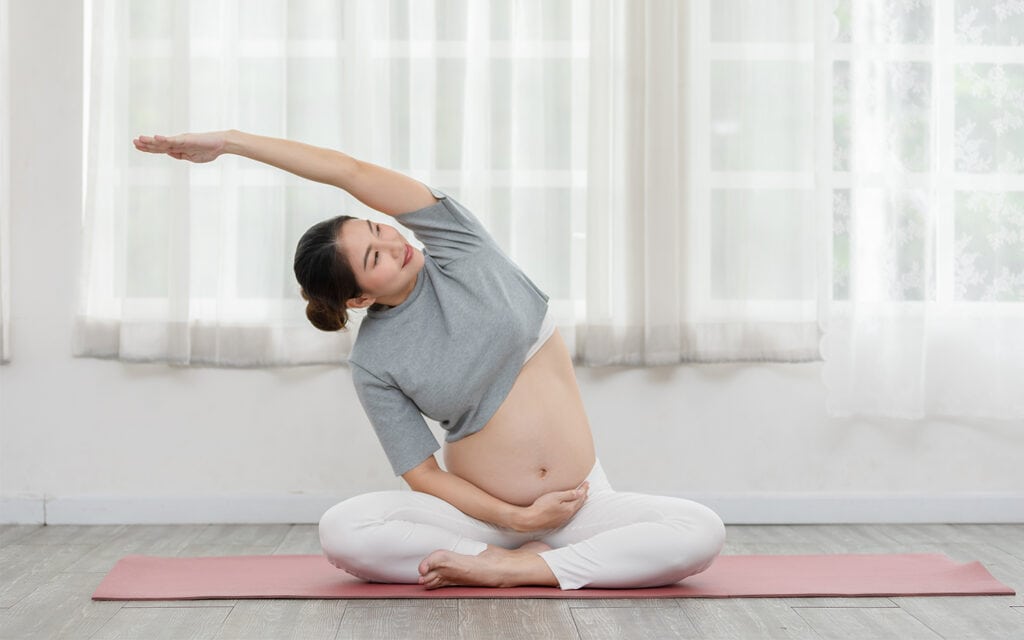
Studies have demonstrated the great benefits to the body of staying active while pregnant (1). Exercising, in general, can keep pregnant women healthy and strong. Walking, stretching, yoga, swimming, and climbing are all beneficial. Before engaging in any physical activity, it is always important to check with your doctor before starting any exercise routine.
Overall, exercise is great for strengthening the heart, lowering blood pressure, boosting mood to keep stress and anxiety away, strengthening muscles, and improving sleep. Any exercise that increases your heart rate and engages your muscles is effective.
Climbing is a great activity to supplement physical activity during pregnancy. Most women who exercise throughout their entire pregnancy experience a quicker recovery and fewer delivery complications. But no matter what activity you choose, there are always possible risks involved.
The Risk of Exercising While Pregnant
However, you should avoid certain types of exercise believed to be high-risk during pregnancy for your and your baby’s health and safety. These include contact sports, hot yoga, exercising in hot weather, and activities involving lying flat on your back for more than a few minutes.
During pregnancy, your joints loosen, and your center of gravity shifts, increasing your risk of falling. Because of this, it’s best to have a spotter for any activities that involve balancing. Exertion while pregnant can induce physical symptoms like dizziness, contractions, and bleeding or leaking. If you experience any of these symptoms, stop exercising immediately.
Whether this is your first pregnancy or your fifth, it is always best to consult your doctor and keep them informed of your regular physical activity programs.
Is It Safe to Climb While Pregnant?
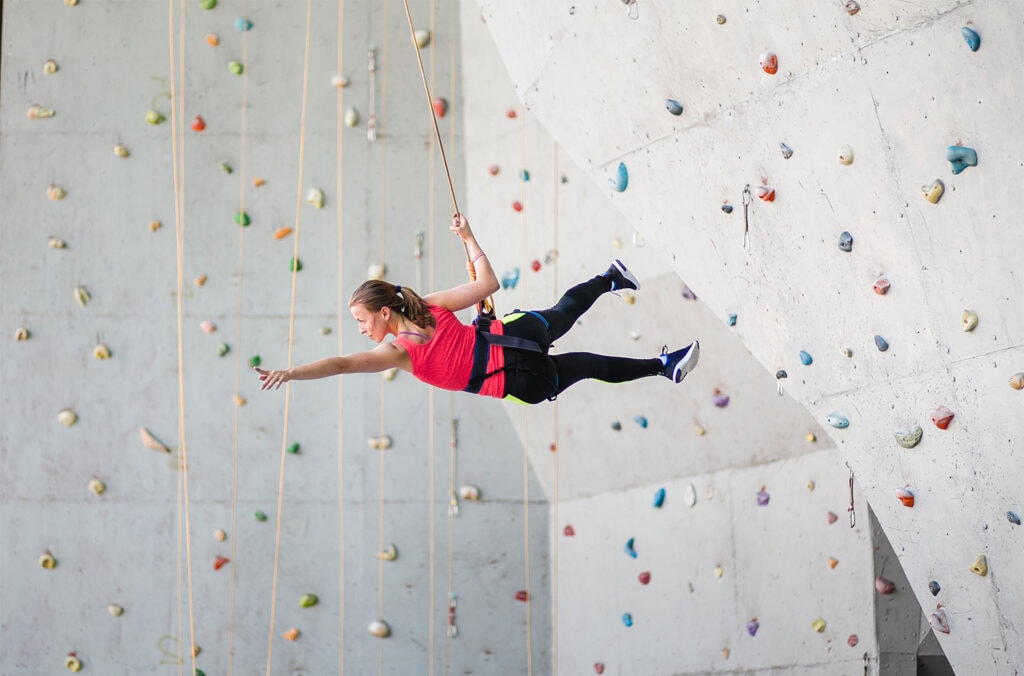
In their 2017 study (2) about the relationship between rock climbing and preterm birth, Drastig et al. had the following conclusion:
When continuing sport climbing as a recreational activity during an uncomplicated pregnancy, experienced athletes do not have a higher risk of adverse events.
Nonetheless, it’s important to note that everyone experiences pregnancy differently. Your first trimester may be a breeze, or you may struggle with constant nausea. You may find that in your second or third trimester, you suddenly have endless amounts of energy. You may even feel sick and uncomfortable for the entire nine months. There’s no way of predicting exactly what you will experience. This points out that there’s no real way to know if climbing pregnant is a good choice for you.
One important aspect of climbing while pregnant is that you will deal with compromised balance. Changes in your center of gravity increase your risk of falling and creating injury to yourself or your baby. Because climbing requires core strength, and pregnancy weakens the core, it can make climbing quite risky. To counterbalance this risk, maintaining strength in your arms and back muscles helps keep you stable. Climbing is also a great way to build and maintain strength in these areas!
General Changes During Pregnancy
On average, a pregnant woman will gain between 25 to 35 pounds during her pregnancy. In early pregnancy, your blood volume increases at an incredible rate, causing 4lbs of weight gain alone. A pregnant woman will also gain 2 pounds of amniotic fluid, 3.5 lbs of additional weight in the uterus and placenta, and 2.5 pounds of additional body fluid. Breast changes create around 3 lbs of weight gain, and 7 to 10 pounds are added for the weight of just the baby. While these changes occur, having loose joints is very common, especially in the hips, ankles, and feet. This often causes you to feel off-balance and fatigued, adding to the challenges of performing any physical activity.
When It’s Safest to Climb
Each trimester of pregnancy brings obstacles of its own, including morning sickness, weight gain, a weakened core, and additional health risks. Training during pregnancy can be compared to rock climbing with a weighted vest on. With enough practice, you adjust to carrying around the added weight with good balance and a strong core.
Generally, climbing throughout your pregnancy is safe, although it is not advised to add new exercises you haven’t done before. Participating in lead climbing or using the boulder wall is also not recommended.
An experienced or professional climber may be more comfortable climbing on harder routes or for longer periods. Overall, do what feels right to you as you are the most informed person regarding your body and its changes and limits during your pregnancy.
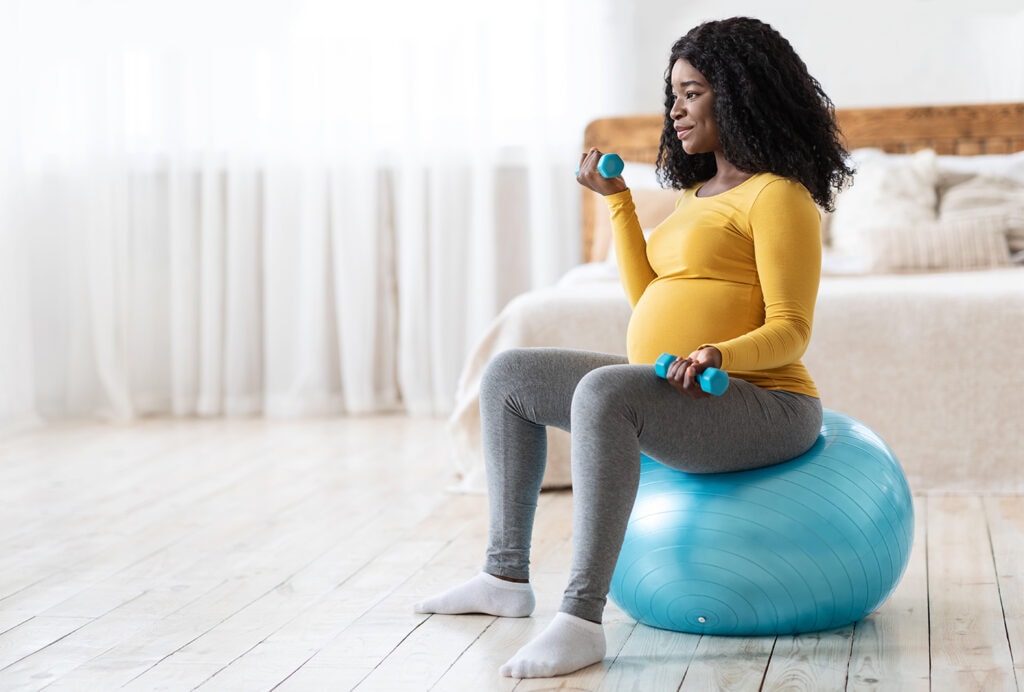
First Trimester
During the first trimester, morning sickness, odd cravings, and low energy are all normal symptoms you will experience. In this stage of pregnancy, your body releases the hormone relaxin. It loosens joints, allowing the pelvic joints to expand. Because of this, you will experience hypermobility in your hips, shoulders, feet, and ankles around the six-week mark. If you are not careful during activities, you can experience an injury that may even plague you for years.
The length and difficulty level you work out and climb during early pregnancy can be very similar, if not the same as pre-pregnancy. If you have been climbing or weightlifting consistently before getting pregnant, you can continue to do so. Most people can continue their regular workout routine during the first trimester. Moderate exercise for 30 minutes daily, three times a week, is recommended.
Second Trimester
During your second semester, you’ll start seeing more dramatic physical changes. At this stage, it’s normal to experience weight gain, fatigue, sleep loss, headaches, acne, and heartburn. Your internal organs also begin to compress, causing increased discomfort.
Once your abdomen starts to grow larger, wearing a full-body harness is needed. A full-body harness crosses below the belly and creates further support. Because it’s common for your feet to swell during this trimester, you might need to go up a size in your climbing shoes. Swollen feet are common with pregnancy, and a larger shoe size will be more comfortable to wear. Be sure to find a shoe with great flexibility in closure and material to accommodate ongoing changes.
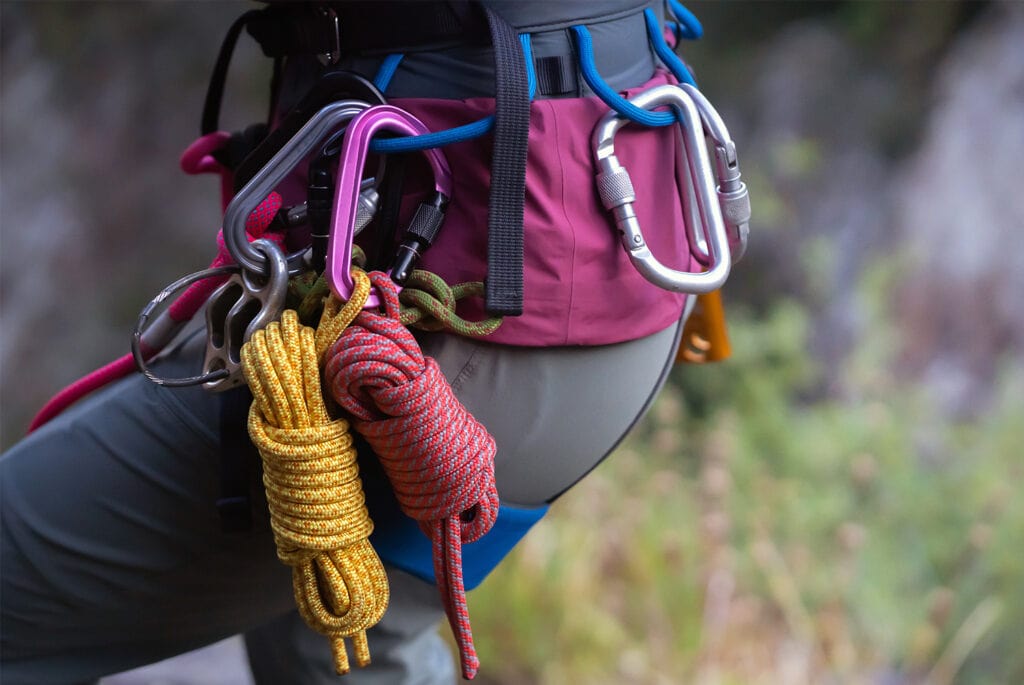
The best kind of physical activity for this stage of pregnancy is bodyweight exercises and low-impact workouts. This category included climbing. Climb at a beginner or moderate difficulty level and make sure not to overexert yourself. Bouldering and lead climbing are not encouraged, so stick to top-roping.
Consistently active women will probably be comfortable doing more intense physical activity even at this point in the pregnancy. Of course, it’s always best to consult your doctor about your workout routine before doing anything strenuous. It’s essential to do what feels comfortable to you. Each woman is likely at a different place in their exercise journey, so climbing or exercising while pregnant will look different for everyone.
Third Trimester
This is a particularly challenging stage. During this trimester, you can become extremely uncomfortable. Many women have said that climbing felt difficult, as they experienced increased pelvic and back pain. During this stage, pelvic floor pain, cramps, swollen feet, and an achy back are prevalent.

To work around this discomfort, take time to stretch and warm-up before each workout. Doing prenatal yoga can also be of great help. Although it may not seem beneficial with all the symptoms you experience at this late stage of gestation, continue climbing and exercising for as long as you feel comfortable. Climbing will strengthen your ab muscles and prepare you for birth and postpartum recovery.
For more aerobic activities, go for a hike, or spend time walking or doing any cardio workout that gets your heart pumping. If you decide to continue climbing, take on easier climbs, climb lower grades, and focus on building strength in your core. Work on shoulder stabilization movements and exercises to build arm and finger strength to protect your loosening joints.
Pregnant women, after 20 weeks of gestation, can experience pre-eclampsia. This shows up most often as high blood pressure and high protein levels in the urine. It can be present without symptoms, and if left untreated, it can cause severe complications for mom and baby. If anything feels off, it’s a good idea to take extra precautions and see you’re doctor as soon as possible.
Tips for Pregnant Rock Climbers
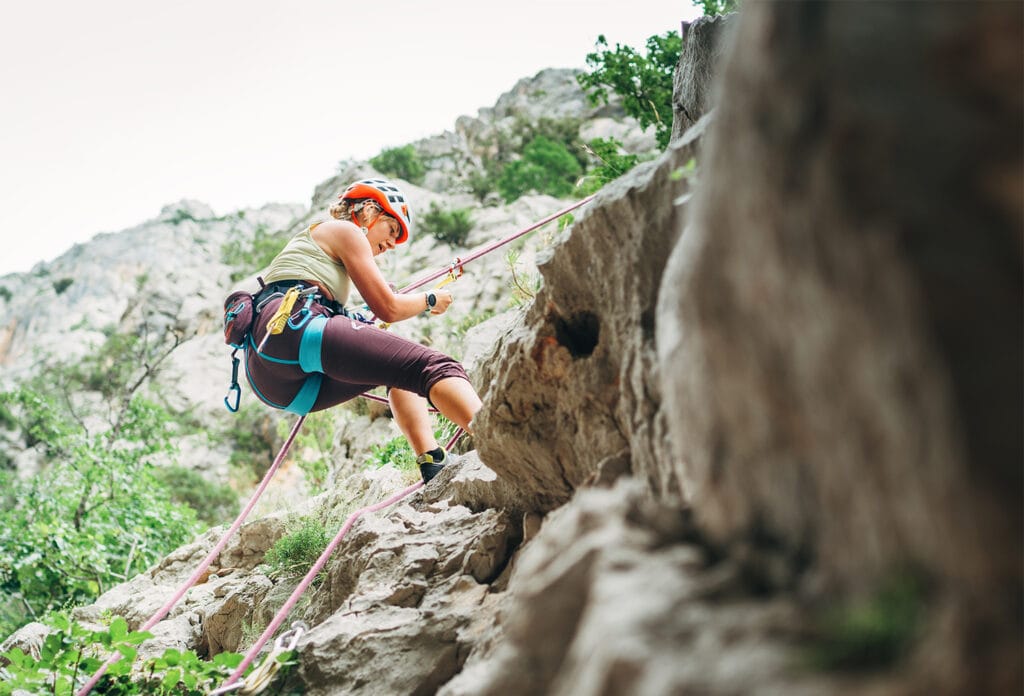
Climbing is one of the best physical activities for pregnant women who are avid climbers. Never start a new exercise program or training regimen when pregnant without first talking to a medical professional.
Seek out medical advice and do some research on your own. Certain physical activities are more recommended than others, and climbing may not always be your best option. Always consider your current health situation, your trimester in pregnancy, and the risks you may encounter during the journey.
Safety Precautions While Rock Climbing
Safety is the most important thing. Keeping yourself and your baby safe is your highest priority. Your life and your baby’s life are not worth the risk of serious injury.
Always wear a full-body harness to support your growing belly while on the climbing wall. This specialized harness will take pressure off the abdomen and provide further support to your body. Avoid any climbing that will cause trauma or injury to the belly, like lead climbing or using the bouldering wall.

Learn to climb while leading with your feet. Climbing feet first will prevent doming of the abdominal muscles that can happen when hanging on and supporting your arms too much. Pressure built up in the abdomen can cause a separation of the diastasis recti muscles. Many women experience this near the end of their pregnancy, which means a longer postpartum recovery.
Tips for Getting Back to Rock Climbing After Giving Birth
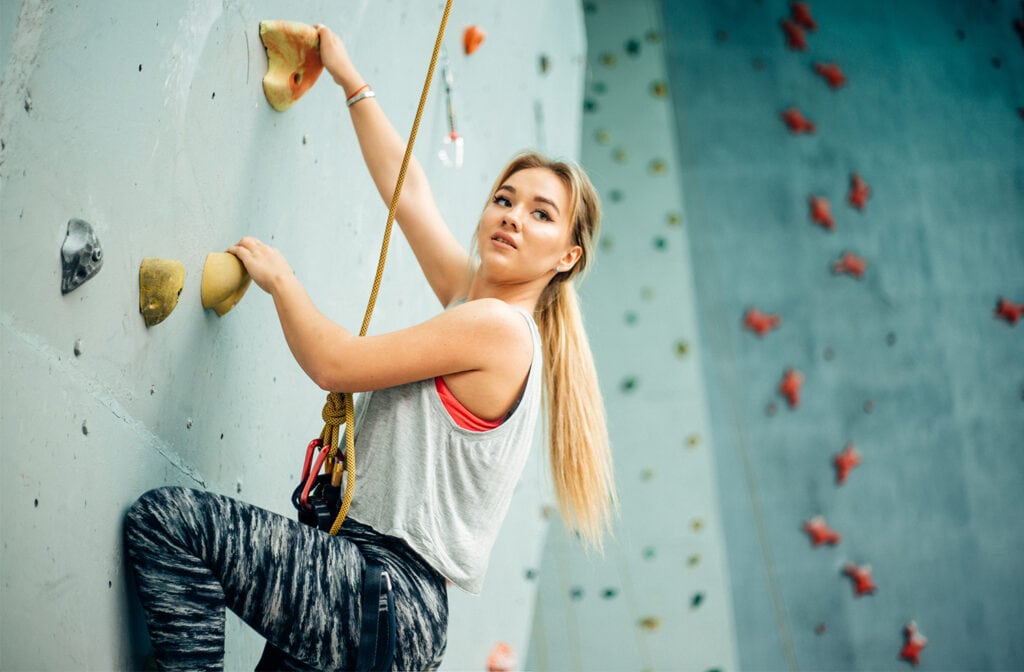
Rest
During birth and pregnancy, your body has gone through a massive amount of trauma and changes. Your pelvic floor has weakened, your core strength is compromised, and your energy levels are extremely low due to growing the new life you’ve just welcomed into this world. Although it may be hard to get back into climbing after birth, it’s not impossible. Before diving into an intense workout program, make sure to rest. Bonding with your baby and resting is a vital part of recovery.
Assess your fitness level
In the first week after having your baby, start by working on your pelvic floor and doing regular breathing exercises to build your abdominal strength back. Make sure you can successfully lift your baby, carry groceries, and do normal daily activities without pain before you start training regularly or head back to the gym.
WARNING: Always consult and get clearance from your doctor before doing any strenuous activity after childbirth, including climbing, running, or lifting heavy weights.
Slow and steady wins
When you begin activities again, slowly add things to your routine and always listen to your body. Focus on increasing core strength and flexibility. Keep in mind any medical condition you’ve endured during pregnancy and birth that may bring limitations. Get onto a consistent schedule that works for you. Every climber is different and will get back into exercising and climbing at a different rate during their postpartum journey.

Work on your core and grip
This is a great time to work on your arm and finger strength using a hangboard. Remember that many hangboard activities, like pull-ups, require a lot of core activation. This core activation can cause doming in the abdomen if done too quickly or strenuously, slowing your recovery. You may not be ready for this activity, so choose hangboard activities focusing on arm strength until your core is stronger.
Don’t forget to be gentle with yourself and return to climbing only when you feel ready. Remember that there is no right or wrong time to enter the climbing world.
Although your goals of rock climbing while pregnant will change throughout your pregnancy, the opportunity for training and strengthening your body with climbing will always be there. Thankfully you can customize your schedule and difficulty level in endless ways to fit what works best for you.
Conclusion
So when answering the question, ‘Is climbing safe during pregnancy,’ the answer is a bit more complicated than it may seem. While climbing during all three trimesters of pregnancy can keep your body strong and agile, it’s always best to take the necessary precautions and find what works best for you. This may even involve taking an extended break from climbing, no matter how much you enjoy it. Maybe the question should be, ‘Am I still considered a climber even if I don’t climb while pregnant?’ I’m happy to say that the answer is a resounding ‘YES’!
References
Pregnancy and exercise: Baby, let’s move!
https://www.mayoclinic.org/healthy-lifestyle/pregnancy-week-by-week/in-depth/pregnancy-and-exercise/
Pregnant Women in Sport Climbing – Is there a Higher Risk for Preterm Birth?
Jan Drastig, David Hillebrandt, Werner Rath, Thomas Küpper
Zeitschrift für Geburtshilfe und Neonatologie (2017)
https://pubmed.ncbi.nlm.nih.gov/28103619/
Exercise during pregnancy: a critical appraisal of the literature.
Stephanie N. Morris, Natasha R. Johnson
Journal of Reproductive Medicine (2005)
https://pubmed.ncbi.nlm.nih.gov/15841930/

